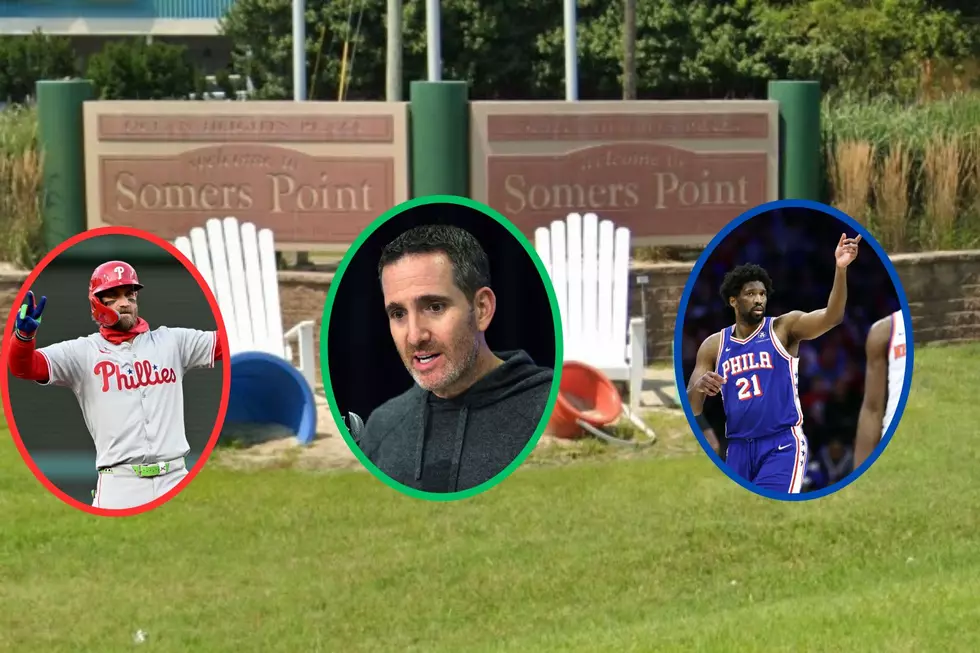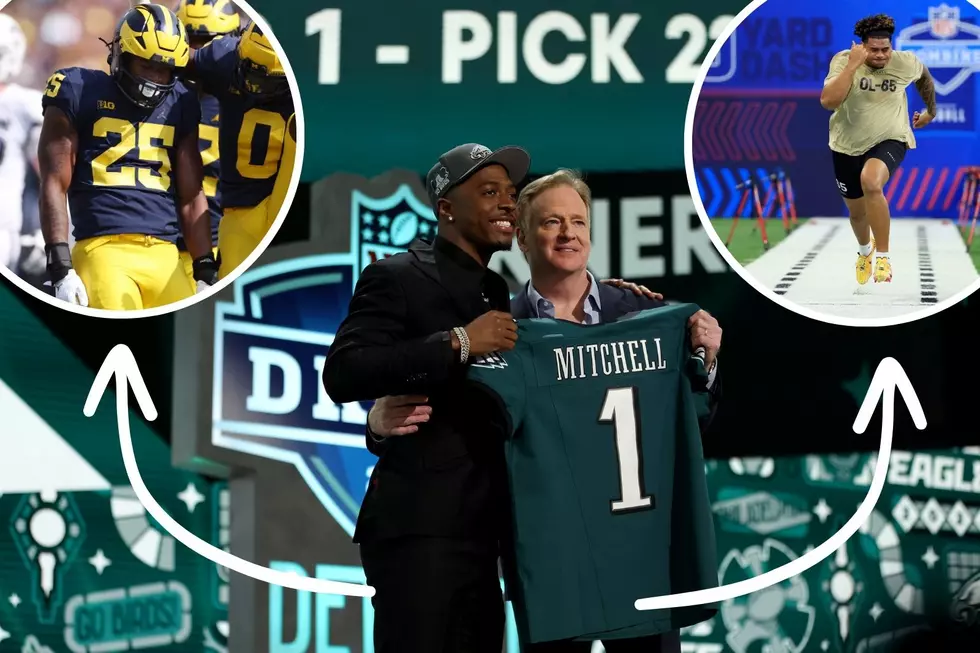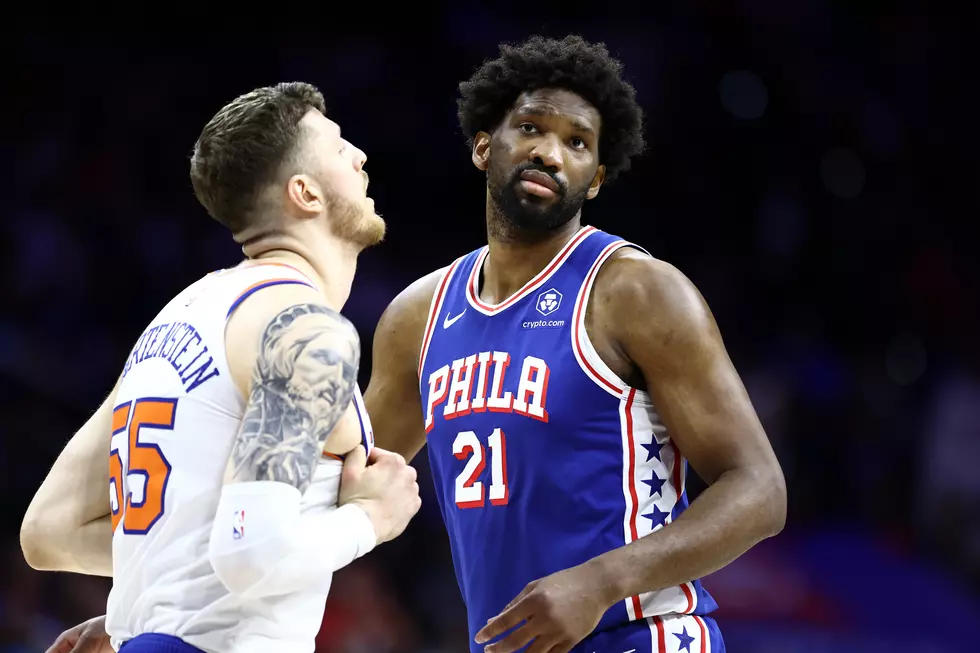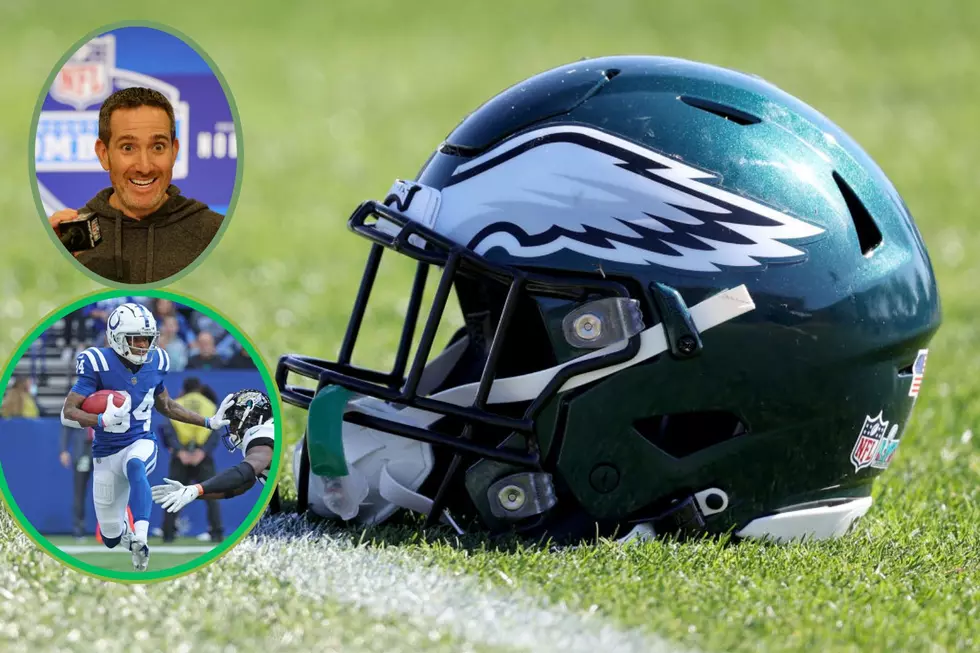
What do you need to know about Joel Embiid’s meniscus injury? Let Rothman Orthopaedics explain
It takes Google a fraction of a second to pull results for the search "meniscus recovery time".
Three different articles surface at the very top of your search results, with certain sentences highlighted to offer what you're looking for.
One says up to a month on crutches, with a knee brace needed for the first six weeks after surgery, if the patient goes that route.
Another claims you can bear weight as quickly as two days after surgery, with a return to full activity achievable within a month.
How about a third to break the tie? Not quite. Motion is often restricted for up to six weeks, the literature claims.
No clear answers, and certainly nothing for when the patient is a seven-foot tall pro basketball player, all 280 pounds of him charged with leading the local NBA franchise on a deep playoff run.
Growing up in a family of physicians and nurses, you hear phrases like "each case is different" and "no two patients heal the same" at least once a week.
I'd imagine that holds true when comparing an average Joe who has suffered a meniscus injury to an impossibly agile human tower who is dealing with what the Sixers call an injury to the "lateral meniscus in his left knee".
The reality is any extended absence for Joel Embiid will challenge Philadelphia to simply tread water.
Some sort of timeline will be revealed soon enough. Rather than focus on that, 97.3 ESPN sought context for meniscus injuries - what Embiid may be dealing with, what the options are, and how he can manage it going forward.
To best understand the injury in general terms, 97.3 talked to Dr. John Salvo, MD. Dr. Salvo is a Sports Medicine Surgeon at Rothman Orthopaedic Institute. He's also one of Rothman's team physicians for the Philadelphia Eagles.
DISCLAIMER: In a statement to 97.3 ESPN, Dr. Salvo said, "I have not seen him, examined him, or looked at any images. These are just general statements about this type of meniscal tear pattern."
Warriors forward Jonathan Kuminga landed on Embiid's left leg fighting for a loose ball late in Philadelphia's loss in Golden State on Tuesday. Embiid yelped in pain, grabbing at the knee for a few minutes before limping off with the Sixers' athletic trainers. He did not return, although the game was almost certainly decided at that point anyway.
After the game, Nick Nurse mentioned that the injury was different from the knee soreness Embiid had been dealing with over the past few weeks and that an MRI would be done.
Nearly two full days passed before clarity was provided:
"An MRI following Tuesday’s game and further evaluation over the last 24 hours revealed an injury to the lateral meniscus in Embiid’s left knee," a team official said.
"Embiid, in consultation with the 76ers medical staff and several leading specialists, will be OUT through the weekend while a treatment plan is finalized. Updates will be provided as appropriate."
The amount of time that passed between the injury and the update drew criticism from fans, who questioned how the situation was being handled by those responsible for protecting Embiid from himself.
So, why might it have taken almost 48 hours for anything of substance to go public?
According to Dr. Salvo, the team and the player are often at the mercy of the swelling around the injury.
"I don't know if…they may have been waiting. I don't know if he got his MRI because they were on the west coast. So, I don't know if they were waiting to see, you know, he hurt himself, he was out of the game, had some swelling in the knee," Dr. Salvo said.
"First thing you're going to do is treat it in ice and have the athletic trainers work on him. Try to get the swelling down. And then when you determine it needs an MRI, they may have just been saying, 'Alright, let's get him home and we'll do it at home'. That might've been the delay."
"Have the athletic trainers work on him" gets tossed around often. It's a phrase that leaves everything to the imagination. Again, it's often about trouble-shooting swelling.
"The athletic trainers for all these pro teams, they are highly trained individuals. A big part of their training is rehabbing sports injuries in athletes. So, there are things they can do, they have ice compression systems. Try to get the swelling down. They can do some deep-tissue work and work on his mobility," Dr. Salvo explained to 97.3.
"But, the key when somebody gets injured is controlling the swelling. So, they have things called a Game Ready, which is a big, long sleeve that actually has compression and ice. That really helps keep swelling down. The more you keep it down, the better it is and sometimes the quicker the recovery."
The public confusion didn't end when the Sixers provided their official update on Thursday night. The national insiders had first rights to the information, with the various beat writers receiving word a few minutes later.
It's not a coincidence that those included reported largely the same language, except for one person.
Shams Charania, in his usual effort to beat ESPN's Adrian Wojnarowski to news on X, reported that Embiid had suffered a torn meniscus.
But, in a rare turn of events, he deleted the post and later corrected himself, admitting that the Sixers had not confirmed that the injury was indeed a torn meniscus.
So, right now, Philadelphia's stance is that it's a meniscus injury. The question is, are all meniscus injuries just torn menisci, with the variation being partial or full?
"No, there's all kinds of different tears that can happen. What you do, as surgeons, we put everything together - with how the injury happened, what his knee examines like and what the imaging looks like, and kind of put it all together. So, there are some tears that are partial tears but stable. That may not necessarily need a surgical procedure done. A lot of the tears do need surgery, and then it depends on where the tear is," Dr. Salvo told 97.3.
"We look at the tear pattern and the tear location. So, the tear pattern, it can come all the way through the meniscus. It could be what's called a cleavage tear, so it goes through the mid-substance of it. The severe ones are the bucket-handle tears, where the meniscus tears and flips into the knee and the knee locks up. So, those are the more severe ones. But, when you take that all together, that's where you decide what your treatment is. And then you're talking about an elite athlete, and you're going to be more aggressive about making sure that that meniscus is in good shape."
On Saturday, Charania reported that Embiid has been diagnosed with a "displaced flap of the meniscus in his left knee". He is weighing his options, which include just resting/rehabbing the knee and a surgical procedure, Charania reported. As of Saturday afternoon, the Sixers' stance remained that it's a left meniscus injury, with no further detail expected until Sunday evening or Monday.
Nevertheless, Dr. Salvo was happy to explain in a follow-up conversation.
"So, a flap tear means it's part of the meniscus that has torn. Those are typically more of a trimming when treated surgically than that longer recovery that you have to a suture repair," he explained to 97.3.
In other words, a flap tear would fall short of the worst-case scenario.
"This is not a bucket handle. The bucket-handle ones are the ones that are the most severe. This is actually its own category. It's not a cleavage tear, it's not a bucket-handle tear. There's also parrot-beak tears, which are sort of in the same category as a flap tear. So, it's just like an inner flap of the meniscus where it tore that just creates some unstable tissue," Dr. Salvo said.
The difference between a trimming and a suture repair, as it pertains to the Sixers, is the difference between holding out hope for a long playoff run and the season effectively being over now.
"If it's a suture repair, return to sport is about four months. But, it doesn't sound like that is [the injury diagnosed in Charania's reporting] at all," Dr. Salvo said. "A flap tear typically is not stitched. It is usually a simple arthroscopic procedure to go in, trim up the bad unstable tissue, and, as long as there's good tissue there, it should function fine."
According to Dr. Salvo, if it is indeed a flap injury and surgery is elected, the timeline for recovery typically approaches six weeks.
"So, two-to-four weeks is way quick. It's probably around that six-week mark, give or take. And the way you judge it is how they go through with their recovery," Dr. Salvo explained.
"Is their swelling down? Are they having any pain or symptoms? And how quickly can they get up and get moving? And pivoting and pounding on the knee? At around that four-to-six-week mark, you see how the player's doing, see how he's feeling, and you go by clinical judgment at that point. In general, full pain-free range of motion, full strength, ability to run and cut without pain, you're there."
This isn't the first time Embiid has dealt with a meniscus injury in that knee. He tore the meniscus in his left knee back in 2017, his rookie season. He had minor arthroscopic surgery to repair the defect. So, would this defect be a recurrence of the same injury?
"In general, somebody with his history, he did have the arthroscopic procedure on this same knee in 2017. He recovered from that, and that was great. So typically what happens, though, is if you have a recurrent injury to the meniscus that already had surgery, it's usually near the same spot," Dr. Salvo told 97.3.
"With the meniscus, there are two general things that happen. Either there's a tear in the inner aspect of the disc; it's like a little cushion. Those need to be trimmed up, and that's usually a pretty quick recovery. If that was his case, that part that was torn before was already taken out. So, it may be just a new injury. The second way it's treated is if they put stitches in it."
The question, according to Dr. Salvo, is whether Embiid missed the remainder of the 2016-17 season more for the purposes of recovering or because the team wanted to protect him with there being nothing of real value to play for at the end of the campaign.
"But to answer your question, it is likely a tear in a different part of the meniscus. The meniscus, itself, they're cushions and shock-absorbers of the knee. So, there's one on the inside - medial side - and then there's one on the outside -- which is the lateral side -- which is apparently where his recurrent injury is."
The criticism from fans doesn't end with the flow of information after Embiid departed the game in Golden State. He had already missed the team's previous two games with soreness in that same knee, and did not look healthy in the minutes he was on the floor against the Warriors.
Yet, there's still so much we won't know and, frankly, may never know. We may never know if the imaging of Embiid's knee is showing a defect created by the impact of Kuminga landing on his leg. We may never know if the injury being treated is actually from a pre-existing defect sustained prior to the Golden State game.
"So, when you look at injuries like this, we look at them as 'acute', which means the injury happened and then you had damage to the tissue. You look at 'chronic' ones, where they may have had a little something going on there but everything is stable and they have no symptoms. Or, an 'acute on chronic', which means there may be some tissue damage - which the patient has been fine with - and then an acute thing happens, the tear changes a little bit, and then symptoms start," Dr. Salvo explained.
"But, that's not like a multi-week timeframe. Chronic things can be years. Acute things are usually like 'gotcha' moments. It's like when people tear their ACLs; you plant your knee, twist, pop, swelling. Your knee is loose, you know when you did it."
So, while everyone waits for the full package of information and a ruling on which path Embiid will travel, what would an expert recommend for someone like the reigning league MVP?
"Well, you have to treat the current injury, right? And I think we talked about that a little before. The meniscus is done arthroscopically, so it's small incisions and then we take into account the tear pattern, the tear location - which is key, because the blood supply comes in from the outer rim of the meniscus, travels up roughly about halfway, maybe a little bit more, through the tissue. And that's important because if there's a tear that needs sutures to stabilize it, you got to have good blood supply there for it to heal," Dr. Salvo told 97.3.
"And that's why a lot of these can get trimmed, because about half the tissue doesn't have good blood supply. So, it really depends on what you're doing and what you need to treat the pathology that's in his knee. Then making sure that when it's done arthroscopically, we look at everything inside the knee. Every compartment, every structure. Make sure there's nothing else there that could be causing issues."
As it concerns the here and now, you take the symptoms Embiid is experiencing in conjunction with the MRI to determine the best course of action.
But, how do those involved manage this through the rest of the season - assuming Embiid is able to return - especially when the patient has the physical measurements he does?
"So, look, he's a unique, unique athlete. He is large, he is skilled, and he is nimble. That's a once-in-a-lifetime combination of skills. And he's got soft hands. So, a guy like that, with the injury - if they choose not to do surgery - then they're going to work with physical therapy, all the athletic trainers that the Sixers have. And they work on, number one, get the swelling down. Two, get the motion back. And then, if it doesn't need surgery, when he regains his mobility and his strength, then it's all a gradual progression," Dr. Salvo said.
"You start with some low-impact stuff, like a stationary bike. Then, eventually start some treadmill stuff and then do a walk-to-jog transition. If he's feeling good, you keep pushing it. You go by his symptoms at that point. If you can get him up and up to running, if they determine it doesn't need surgery. Hard to predict how long it takes to get there, but they can get there. But, I think it's probably more likely he's going to need something done. And if he does, it's going to be arthroscopic and it depends on the tear pattern and the location and the stability of the meniscus."
There's also a degree of caution that must be practiced beyond the here and now. Not only does everyone have to manage this treatment and recovery through the rest of the season, but they have to manage it in a way that is going to reduce risk going forward for the rest of Embiid's career.
"A big thing about that is when he's got such a large frame and he's a massive guy, taking weight down can decrease the stress on the meniscus and on your knees. So, that's one thing. And then, when he's done playing basketball and he's not year-round training and pounding on it, that helps you when you're looking at the long-term health of the player as a patient," Dr. Salvo said.
"But, it's not like he takes care of this, say he gets it fixed, comes back, he plays. If he's feeling good, he rehabs it through the offseason and then they'll have some things going through his rehab for him to do to protect the knee."
We'll know more in the days to come.
KEEP READING: South Jersey Athletes Who Played/Coached in NBA and MLB
Gallery Credit: Josh Hennig
More From 97.3 ESPN









